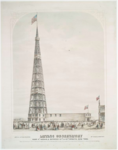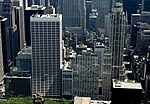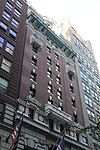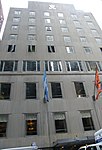Aeolian Building (42nd Street)
1912 establishments in New York CityBryant Park buildingsCUNY Graduate CenterConcert halls in New York CityFormer music venues in New York City ... and 4 more
Library buildings completed in 1912Music venues in ManhattanState University of New YorkWarren and Wetmore buildings

The Aeolian Building is a skyscraper in Midtown Manhattan in New York City, at 29–33 West 42nd Street and 34 West 43rd Street, just north of Bryant Park. The 1912 building was the fourth headquarters of the Aeolian Company, which manufactured pianos and other musical instruments. the 18-story building contained the 1,100-seat Aeolian Hall (1912–1927), a top concert hall of its day. The building stands next to the Grace Building.
Excerpt from the Wikipedia article Aeolian Building (42nd Street) (License: CC BY-SA 3.0, Authors, Images).Aeolian Building (42nd Street)
West 43rd Street, New York Manhattan
Geographical coordinates (GPS) Address Website Nearby Places Show on map
Geographical coordinates (GPS)
| Latitude | Longitude |
|---|---|
| N 40.7544 ° | E -73.9822 ° |
Address
SUNY State College of Optometry
West 43rd Street
10036 New York, Manhattan
New York, United States
Open on Google Maps









